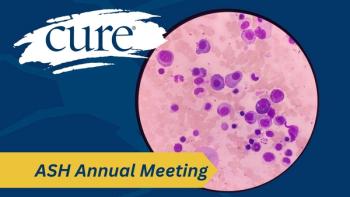
Small Yet Significant Steps in Treating Triple-Negative Breast Cancer
Small Yet Significant Steps in Treating Triple-Negative Breast Cancer
One problem with breast cancer is that it's not one disease. No one can say, "I have breast cancer," and make a treatment decision without also knowing the cancer's specific type and subtype.
And so it goes with triple-negative breast cancer (TNBC). It's not a single disease, but one with several subtypes that respond differently to different treatments in different patients.
Several studies presented at the 2013 San Antonio Breast Cancer Symposium provide small yet significant steps in treating this aggressive form of the disease, which accounts for about 10 to 20 percent of breast cancer diagnoses, primarily in younger women, African-Americans and Hispanics.
TNBC is so named because, unlike other breast cancers, it isn't fueled by the hormones estrogen or progesterone, or by the protein HER2. Consequently, TNBC tumors do not respond to targeted agents, such as tamoxifen or Herceptin (trastuzumab), which are designed to block estrogen and HER2, respectively. That's why chemotherapy before surgery (neoadjuvant) or after (adjuvant) is considered the standard treatment for patients with TNBC.
Scientists now know that the early benefits of a therapy can translate to long-term effectiveness, so a good deal of current research in TNBC is focused on developing therapies that can provide a pathologic complete response (pCR), or a lack of any detectable disease at the time of surgery.
At last year's conference, researchers presented data that showed 34 percent of patients with TNBC who had a pCR with neoadjuvant chemotherapy also had a better overall survival than similar women with similar tumors who had residual disease at the time of surgery.
In one randomized phase 2 study, researchers found that adding the chemotherapy carboplatin and the experimental PARP inhibitor veliparib to standard chemotherapy prior to surgery improved outcomes for women with TNBC. PARP is an enzyme that repairs damaged DNA, so when chemotherapy is administered to damage the DNA in cancer cells, another agent is needed to block PARP from doing its job. That's where veliparib comes in.
The so-called I-SPY 2 trial, which uses an adaptive design that tests several experimental therapies at a time, showed 52 percent of participants with TNBC receiving the extra drugs with the standard approach had no cancer cells identified at surgery, compared with 26 percent of participants receiving standard therapy.
This is the first experimental treatment under investigation in the I-SPY 2 trial to "graduate" since the study was launched in 2010. What that means is the study, which is smaller and more precise, was designed so that treatments that graduate from phase 2 have at least an 85 percent chance of success in phase 3 randomized trials. Only those treatments that can be verified through biomarker or subtype testing can graduate to the next phase of evaluation.
In this specific experimental arm, only participants whose cancers were either HER2-negative and hormone receptor-positive or triple-negative were enrolled to receive the experimental combination or the standard chemotherapy regimen. The combination proved to be more effective as a neoadjuvant treatment in participants with triple-negative cancer than in the other cancer type, with more than a 90 percent probability of success in phase 3 trials.
A second randomized phase 2 study compared the standard chemotherapy using anthracycline- and taxane-based drugs with or without carboplatin and with or without Avastin (bevacizumab). While carboplatin is a traditional chemotherapy, Avastin is a targeted agent that blocks vascular endothelial growth factor (VEGF), an enzyme that drives the growth of blood vessels to tumors—turn off the blood supply and the tumor dies of starvation.
In the CALGB 40603 trial, researchers randomly assigned 443 patients with TNBC to one of the four groups. The groups receiving carboplatin were more likely to have no breast cancer cells found at surgery than those in the standard treatment groups. While 42 percent of patients receiving the standard therapy had no breast cancer cells identified at surgery, that percentage increased to 53 percent in the group receiving standard chemotherapy plus carboplatin. The pCR rate also slightly increased with the addition of Avastin to standard chemotherapy, but was offset by the added toxicities. The group that received standard therapy with carboplatin and Avastin, which appeared to have a synergistic effect, had the highest rate of pCR.
The results were presented by William M. Sikov, from the Warren Alpert Medical School of Brown University in Providence, R.I. When asked if carboplatin should be routinely added to the standard neoadjuvant chemotherapy regimen for women with TNBC, Sikov said, "With the caveat…that we do not have long-term results…my answer to that question would be yes."
In a third study, Joyce O'Shaughnessy, of the Baylor Charles A. Sammons Cancer Center in Dallas, discussed an evaluation of more than 5,500 tumor samples to identify molecular differences between TNBC and other breast cancers in an attempt to discover potential actionable targets for treatment. The analysis showed that 18 percent of TNBC tumors were androgen-receptor positive, and that in nearly all such cases, tumors had a mutation in the PIK3CA gene, suggesting a combination drug to inhibit both pathways would be effective in this TNBC subset.





